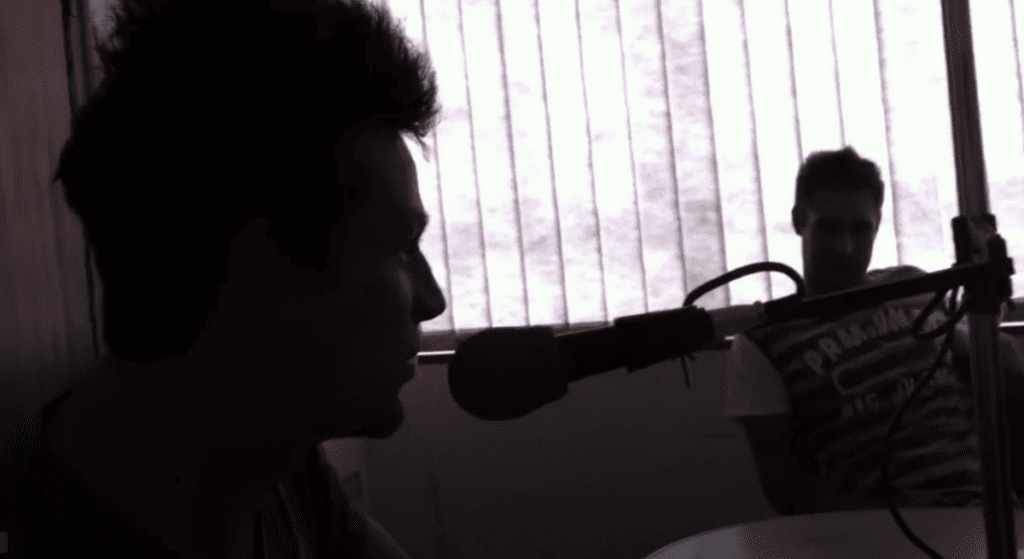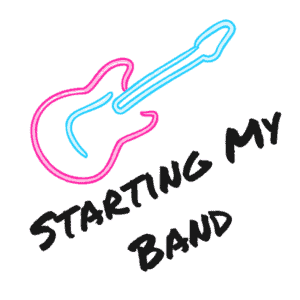A press release is mainly electronic these days and there are also plenty of websites that support you with the process. I have decided to rewrite and update mine without any external support since I have an album release coming up where I would like to use the opportunity to revamp some finer details.
All artists should have a press kit kept updated. It’s like the CV of the artist and contains an overview of all the most important details. Especially their image, vision, future plans and information that you would like to speak about in radio interviews.
Check out my post about preparing for radio interviews if this is something you’ll need soon!
But if an artist is his own boss, what do you need a press kit for?
What is a Press Kit for?
A media press kit contains the information that you would like interviewers to know about you. This could be the story of the artist, their background, previous success, and future plans. This gives the interviewer the content to structure their questions around.
You will especially need one once you release singles and send them to music stations, music managers, promoters and any other type of gatekeeper in the industry.
This article was written and published by De Wet from startingmyband.com on 29.08.2023. The content was stolen from me if this blog post is seen anywhere other than on my website.

The Electronic Press Kit Layout
Interviewers normally don’t have too much time on their hands and the easier we can make their job for them, the more positive and stress-free they feel during the interview.
We would like to create a nice overview layout with big headings and some interesting facts to ask questions about so that the interviewer can focus on your answers and not on the next question that they need to ask.
My suggested layout would look like this:
- Our band story
- Who we are
- The Timeline and Highlights from the Past
- Reach Us Here
- Our future plans and goals
- Album covers, the band logo and other relevant images
You should shape these headings to suit your uniqueness as an artist or band.
Your EPK is the perfect opportunity to showcase Your Image As an Artist! Don’t miss the article I wrote about finding yours if you are still shaping your unique image.
Let’s take a look at what is important under each category and frame it neatly into perspective:
1. Our Band Story
Use a subtle timeline written more in a storyline style that provides a quick overview of how many years have gone by, what type of experiences you’ve collected and where changes in the band membership took place.
Here’s my band story’s start just to give you an idea:
“The year is 2004. In a silver VW Jetta, De Wet and Tertius dutifully drove to band practice on Fridays after school with a 6-pack of Lipton Ice Tea and equipment that they borrowed from a school teacher. We had common dreams and shared influences from a young age. Towards the end of our final school years, we had to part ways temporarily, as is the case with most school pals.”
The first paragraph of my band story
Immediately the the reader sees a few interesting things to ask questions about:
- Why ice tea?
- Tell us about the teacher who borrowed his instruments?
- It leaves curiosity to continue to the next paragraph and see what happening next.
Continue your story by colouring it in with interesting details and things you remember that stood out for you.
It’s YOUR journey, and YOUR story to tell!
2. Who We Are
In this section, I had to think about what type of impression we wanted to make as a pop-punk band, which is often borderline alternative but still commercialized enough for the whole family to sing along and enjoy.
We are also two teachers in the band, so we wanted to warn kids to be careful of strangers and be respectful of older people.
So that’s quite a task to find the balance between being edgy and clean-cut.
I came up with something scary, yet funny and a little off of the social norm which creates an interesting character for my audience to be curious about:
GOJT is a character we created. His strangeness and peculiar social habits cause him to be ostracized from social society.
He is the type of guy who shouts at girls from his car window, and eats his ketchup with a few fries.
There is a large nut tree on his sidewalk which makes it so tempting for the children to taste a few of them on the way home from school.
There are rumors that he peeps on his neighbors when they are barbecuing, but this has yet to be confirmed.
The children laugh at him as they sit safely in their homes, but fear the day he does get hold of them. He just said the other day: “Come closer, I don’t bite…”
GOJT Who We Are
Now tell me that there’s not a gatekeeper in this world that won’t find this interesting, curious, out of the ordinary and original.
And that’s exactly what you need to use. BE ORIGINAL.
I walked into the first record label with this bio, and they still remember the bio word for work even today which is a decade later.
I also ended it with a few mysterious “still to be answered questions” so that the reader would want to stay in contact or connect with the band to find the answers.

3. The Timeline and Highlights From the Past
This is your band curriculum vitae where you just dot down the year and what you’ve accomplished during this year.
The highlights I included were:
- Demo release
- Single releases
- Album releases
- Video releases
- Radio, TV and Podcast interviews (Including links)
- Members joining or leaving
- Award nominees
- Chart plays
- Tours & Gig highlights
- Charity work
One of the interviewer’s favourite questions is always to ask: “Tell us about your favourite performances and why they stood out for you.” By reflecting on these beforehand, you’ll be prepared. Try to also have an interesting or funny story to share about what made these gigs highlights for you.
The more activity you show on your timeline, the better impression you will leave, and the easier it is for you to get access through the gatekeepers.
4. Reach Us Here
This is an easy list of all your social media and links to your music on the streaming platforms.
Just dot them down and add the link like I did below:

It would also be ideal to link to your merchandise page here if you have one already.
5. Future Plans and Goals
This is simply where you give the reader an insight into your future aspirations so that there’s something to look forward to in the future.
You want to offer the reader or listeners some sense of security and excitement about your ambition and future plans by having some things in place.
By the way, I wrote a blog post about setting goals for your band that could help you with proper direction.
Events like these are important to mention:
- Upcoming gigs and tours
- Festival Participation
- Music video release
6. Album covers, Band Logos & Other Relevant Images
It is useful for the gatekeepers to have the images relevant to your band at hand.
By offering them the collection of images, they can place high-quality logos and ads for you where they find appropriate and they don’t have to use low-quality or embarrassing images to promote you.
You want to do most of the work for them so that, if the opportunity arises, they can just recommend your band for a festival since you have given them everything that they will need for the occasion.
Include the following:
- Albums and singles released covers
- Your latest or preferred band logo (I also included the old ones since it shows development to see how the logos have changed over the years)
- At least 3 band pictures: 1 off stage, 1 performance, 1 relevant to your image
By using this structure you’ve basically done most of the presenters’ work for them and you will be an easy and popular guest to host.
When you have your press kit completed, also send it out to podcasters for possible interviews. This is the best way for you to grow your fan base and practice your interview skills simultaneously.
I hope that this will help you!!
You might be interested in checking out some of these posts next:
- Your Social Media Plan to Build a Hype 30 Days Before the Single Release
- What to Do to Get Booked Regularly as an Artist
- Steps to Reach Your First Paid Gig – From Zero to Hero
- The Misconceptions About Being a Signed Musician
Until next time!

